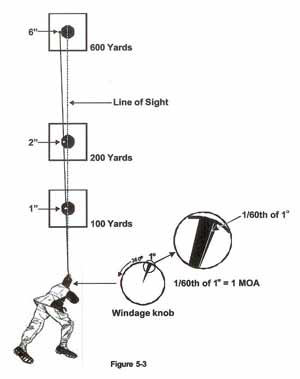

| We want your feedback! Please let us know what you think about TFS. Do you have an interesting story or article that you would like to share? If so, please let us know!
|
Reader Comments:
Thank you for this excellent e-newsletter. The links and information are great.
Sincerely,
John B.
I greatly enjoy the USAMU shooting tips in the newsletter and also being able to find them on-line.
Regards, Ray in FLA
EXCELLENT BRIEF UNDERSTANDABLE ARTICLE ON SITTING RAPID POSITION, BEING CLOSE TO 60 THIS IS MY WORST POSITION AND ANY HELP I CAN GET IS GREATLY APPRECIATED!
GOOD ARTICLE; MARTY
SFC Singley:
It has been a while, but I sent CMP a request for a TFS article on possible means by which us "centrally endowed" (read that as 'fat') shooters might work ourselves into a useable sitting position. Spring is coming and I will be trying to get ready for matches. Your article has been copied and I will read it and work on trying the options you have provided. Thanks very much for your individual military service to our Nation and for your personal efforts to help other shooters improve our skills.
Melvin C.
Really enjoyed the M1 for Vets article. Its really good to read something that was done for
wounded vets. The match must have been a real wingding. Too cold for me. There is alot of
history 1903 Springfield and the M1 . I had to sleep with my o3 for baning the butt on the
deck in boot camp. Anyway thanks again for the story.
Jim N., Ok
I enjoy the TFS. In fact, occasionally I like to print some of the articles to be able to review them in the future.
James L. M.
Whenever we come back in from the field it’s always a good day when “The First Shot” is in. I drill the guys in the fundamentals – many of which I learned and fine tuned at CMP matches – and it comes back in spades out here when it really counts!
Dean H.
LTC - US Army
Security Advisor
Kabul/Afghanistan
Finally caught up with the October '06 story: A Rifle For Shifty. It was simply one of the best things I've read. As someone who had two uncles in combat in WWII, one air corps and one infantry, I will forever believe those men were heroes of the first echelon. Anything any of us can do for any of them is simply the least we can do.
Steve R.
Birmingham, Alabama
The article about Bill Krilling was very good, a great shooter, coach and a gentlemen to boot!
Ruth S.
Thanksfor the great stories and tips. Even old dogs can learn new tricks. This is great for keeping the CMP active.
Tim H., AZ
|
|
|
 |

Sight Adjustment and Minute of Angle (MOA)
By SSG Daniel M. Pettry, USAMU Service Rifle Team Member
|
|
People who shoot for sport, hunting, or even military or law enforcement applications have many convictions, theories and myths about what can be done to improve their ability to hit where they aim and increase the effectiveness of their choice in firearms. There is one conviction, however, where all shooters agree. Every shooter’s objective is for their bullets to impact where their rifle is aimed. This sounds simple enough and, if performed correctly, the bullet should always strike where it is aimed. Although this sounds good in theory, the truth is that many shots do not strike where they are aimed. One thing we can do to increase our chances of success is to learn how our sights work. They can then be adjusted so that when the perfect shot is fired, the bullet will land exactly where it is aimed. This article covers what we need to know as shooters to make sight adjustments that will keep our shots hitting where they are aimed.
Sights on a target rifle are adjustable in units of measurement called minutes of angle or MOA. A minute of angle is equal to 1/60 of a degree (there are 360 degrees in a circle). The easiest and most important thing to remember is that one MOA is equal to one inch at 100 yards. As you move farther away from the target, 1/60th of an angular degree or one MOA equals two inches at 200 yards, three inches at 300 yards and six inches at 600 yards. If you know your firing distance in hundreds of yards, you will know exactly how far a sight adjustment calibrated in MOA will move the strike of the bullet. That knowledge combined with knowing how far you want to move the strike of the bullet on the target enables you to know exactly how many MOA to move your sights.
|
 |
In order to make the proper sight adjustments, shooters need to know their equipment. First and foremost they need to know how many MOA each click on their sights is worth. Different rifles come with sights that adjust in different increments such as ¼ MOA, ½ MOA or 1 MOA. By knowing your sights, you can figure out the amount of adjustment that is needed at any given distance. For example, with a ¼ MOA sight (quarter minute sight), each click is worth ¼ inch at 100 yards, ½ inch at 200 yards, ¾ inch at 300 yards, etc. The smaller the MOA increment is for each click on a sight the more precise your adjustments with that sight can be. Competitive marksmen use ¼ MOA sights because anything greater than that does not allow them make sufficiently precise adjustments in zeroing and making wind adjustments.
When zeroing the AR-15, you may have to make elevation adjustments that are so bold that you have to adjust the front sight. Each notch on the base of the front sight post is worth 1 1/4 MOA. This makes one full rotation of the front sight post worth 5 MOA.
Once you understand how your sights work, and how far each adjustment will move the strike of the bullet, you need to know when and why adjustments are made. Each shooter must establish a baseline zero first. This task shouldn’t be difficult once you know how your sights work. However, in precision shooting, zeros can change on a daily basis, depending on weather and light conditions. It is very important for you always know what your standard zero is so you can make those small sight adjustments when necessary.
On rifles such as the AR-15 where the sights have no real markings on them, it is recommended that you mark your sight with a paint pen or marker so you can always tell if you zero is on your rifle. This is particularly important on a rifle’s windage knob because if it is adjusted for the current wind condition, you can easily return to your zero to minimize the risk of losing track of how many clicks you moved. With practice, you can actually learn to refer to the wind by saying what it is worth in MOA instead of MPH.
Just like in any other sport or hobby, it all becomes easier with practice. Understanding your sights and how they work in relation to your rifle will become easier with time and practice. Every time a shot is fired, you increase your knowledge and experience base, which for all experienced shooters ultimately results in making sight adjustments second nature. A marksman’s goal at the range is to spend as much time as possible working on fundamentals and as little time as possible trying to figure out their equipment. Good luck, and good shooting!
|
|
|


